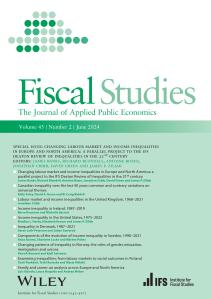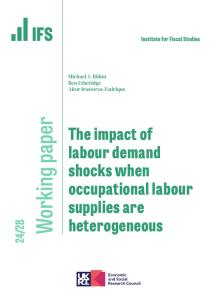This paper forms a small part of the wider and flagship annual publication “Living Standards, Poverty and Inequality in the UK".
The National Living Wage (NLW) announced by George Osborne in July 2015 has been an ambitious change to the level and structure of minimum wages in the UK. Upon its introduction in April 2016, the minimum wage for employees aged 25 and over was increased substantially to £7.20 (it had been £6.50 upon announcement in July 2015). The government also committed to continue raising the minimum wage for those aged 25 and over to reach 60% of median hourly earnings in 2020 (HM Treasury, 2015). This target marks a notable departure from the past practice of minimum wage setting, whereby increases were decided on a year-to-year basis following recommendations made by the Low Pay Commission (LPC) that aimed to balance the positive impacts of a higher minimum against the potential risk of reduced employment.
Increases in the minimum wage boost the hourly wages of workers previously paid below the new minimum, and possibly some of those on higher wages too via ‘spillover effects’, provided they remain in employment. But the impact on the living standards of the lowest-paid workers is less clear than the impact on their hourly wages. This is because their living standards will be influenced by a range of additional factors such as the number of hours worked per week, the amount of taxes paid on their earnings, the benefits and other income sources they receive and the incomes of other people in the household in which they live.
This chapter examines how the hourly wages, weekly earnings and living standards of people with low hourly wages have changed in the years after the introduction of the NLW. This is not the same as the direct impact of the policy, because we do not know how wages or living standards would have grown had the NLW not been introduced; these things tend to change irrespective of minimum wage policy. Nevertheless, by analysing how household incomes changed for different groups in 2016–17, we can show to what extent the wage growth that occurred alongside the NLW’s introduction has led to increases in employees’ living standards and which factors have magnified or muted this impact. Of course, focusing only on those individuals who are in low-paid work comes at the cost of ignoring those who may have lost their job as a result of a higher minimum wage and those who have remained in unemployment longer than they otherwise would have.










